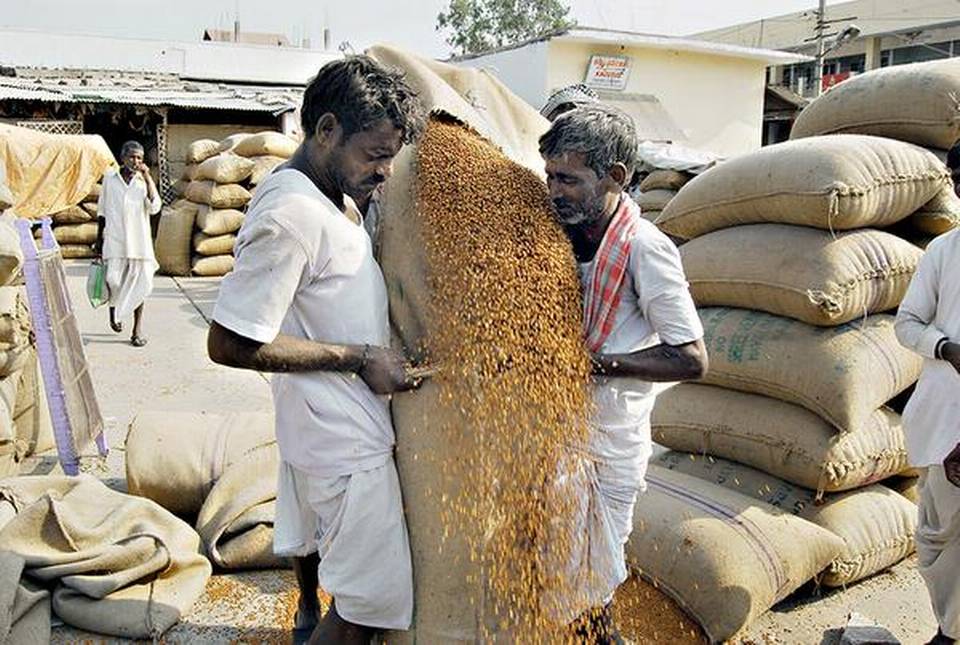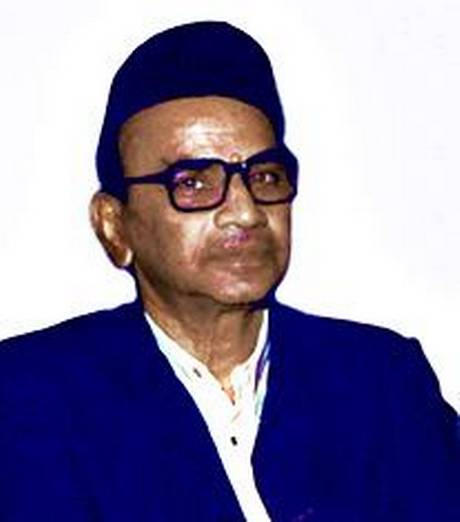Vishwanath Ganiga from Kundapura taluk feels that by this method, the flow of saline water from nearby ponds is stopped.

Udupi :
While researchers in labs around the world work on solutions to the world’s garbage problem, a humble farmer, in a tiny Kundapura village, is doing his bit to save the environment and adapt to a changed ecological scenario in his fields.
Meet Vishwanath Ganiga, a paddy farmer in Katbelthoor village in Kundapura taluk, who has come up with a novel solution — using paper cups to aid paddy cultivation this Kharif season.
Ganiga faces the problem of saline water intruding into his fields. Aware that traditional means of paddy cultivation, which would involve planting saplings in a prepared field, would not succeed, Ganiga skipped a step and now nurtures the seedlings in paper cups, which he then places in the field.
“Saline water from nearby prawn culture ponds was entering my field. I was worried as all paddy I transplanted was getting a brown hue to their stems. I thought of going in for this method,” he told The New Sunday Express. While the method itself is simple, he is unique because no one else in the region dared to give it a try, not being able to believe that paddy seedlings could be nourished in paper cups.
To begin with, he put 50 grams of soil into a paper cup and dropped five to six paddy seeds, covering them with 50 grams of soil. He kept the paper cups out in the open and rains caused the seeds to sprout and grow in 16 days. He then kept these cups in the field and the roots of the seedlings did not come in contact with the soil initially.
However, as they grew, the paper cups started dissolving in the soil and the roots, stronger now, started spreading into the soil, able to handle the salinity in the water. “Even if it does not rain, there is no issue. Just sprinkling some water on the paper cups will help the seeds germinate,” he says.
After experimenting on 15 cents of his paddy field, he now plans to extend the method to the entire 1.5 acres that he owns by next year. His unique method even earned him praise from Kundapur Assistant Commissioner Madhukeshwar who visited his field and praised his efforts. “Saline water intrusion is a problem but Vishwanath Ganiga’s spirit to grow paddy in paper cups deserves appreciation,” the official says.
Ganiga has now kept 1,200 cups in the field without taking on any help. His neighbour- Charlie Mendonsa, a farmer too — has decided to go for paper cup paddy cultivation from next year as he too faces the same problem of saltwater intrusion.
There is nothing special about the cups. They are the same used to drink coffee or tea by others. “I purchased new cups at Rs. 150 for 100 pieces from Kundapur. It is a manageable price. I save on money that would otherwise be spent on labourers for transplanting the saplings. I saved around Rs. 2000 with this method,” he says.
A water-intensive crop, paddy has a little resistance to saltwater but the soil in the cups provides the right environment for the roots to grow strong.
Ganiga, who also runs a grocery shop in Kollur road, uses the paddy cultivation to supplement his income. “It is my own idea. After having suffered for years from saline water intrusion, I thought it was time to experiment. I had seen the forest department officials use a similar method for their nurseries with plastic covers. I thought if plastic covers work for them, why not paper cups for me?” he says.
The Method
Ganiga put 50 grams of soil into a paper cup and dropped five to six paddy seeds, covering them with 50 grams of soil. He kept the paper cups in the open and rains caused the seeds to sprout and grow in 16 days. He then kept these cups in the field and the roots did not come in contact with the soil initially. However, as they grew, the paper cups started dissolving and the roots started spreading into the soil, able to handle the salinity in the water.
source: http://www.newindianexpress.com / The New Indian Express / Home> States> Karnataka / by Prakash Samaga / Express News Service / August 15th, 2019












